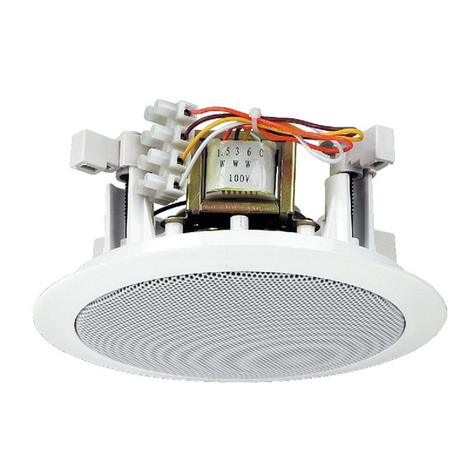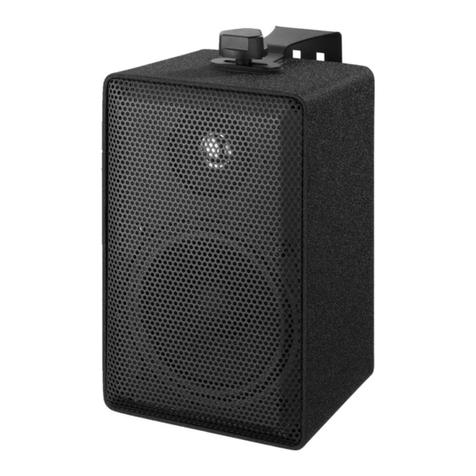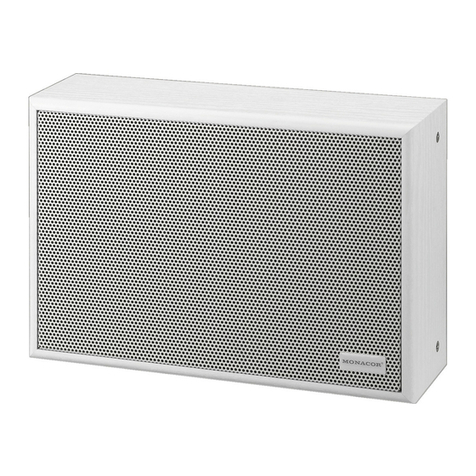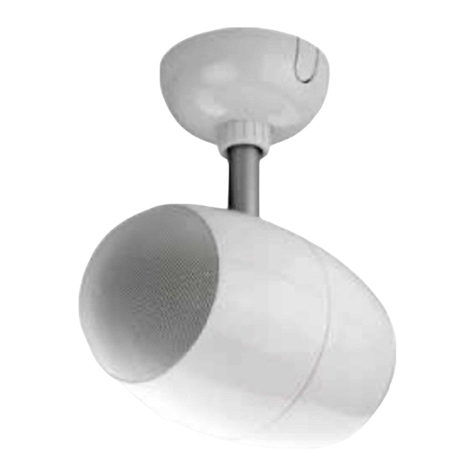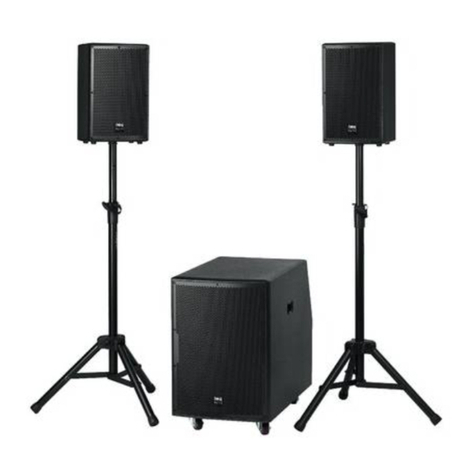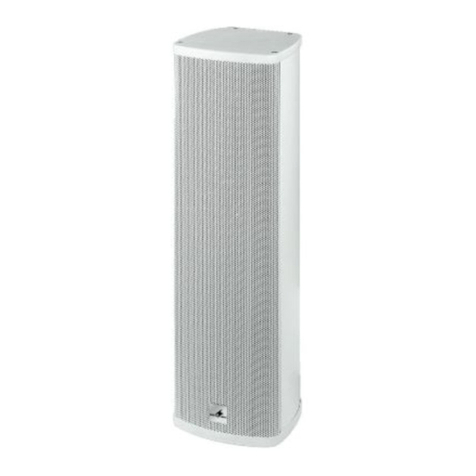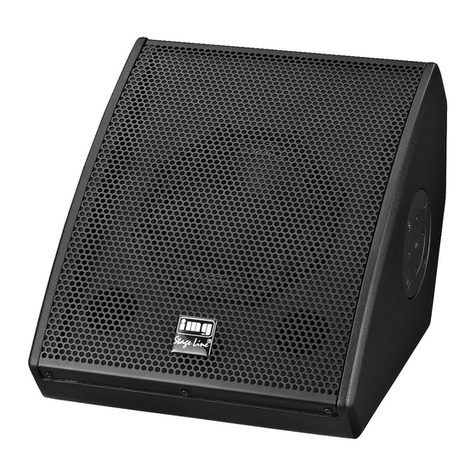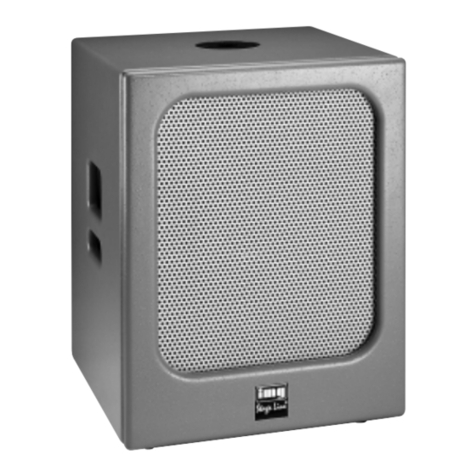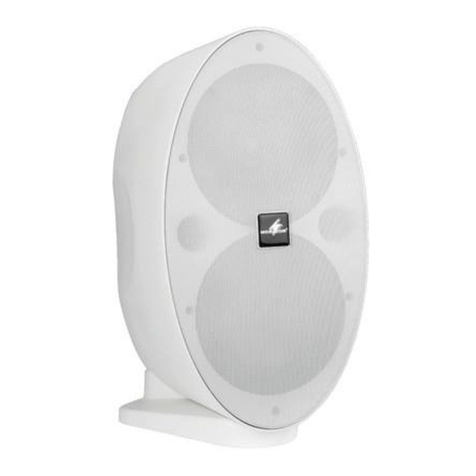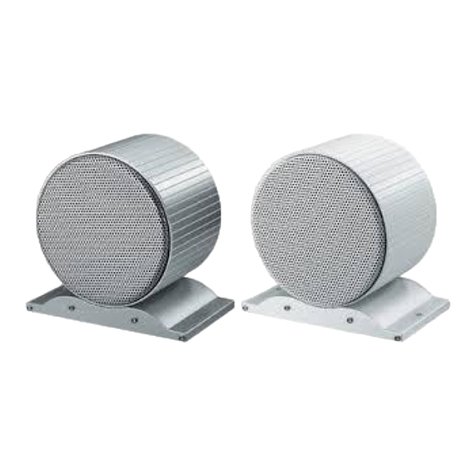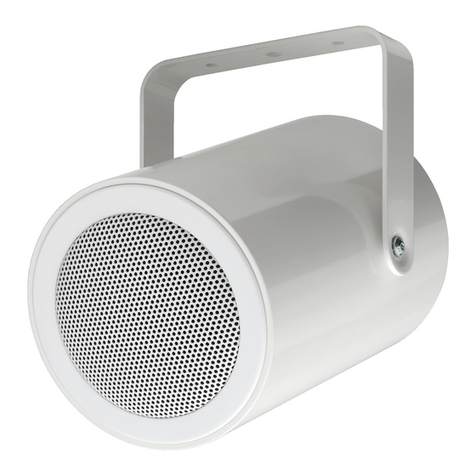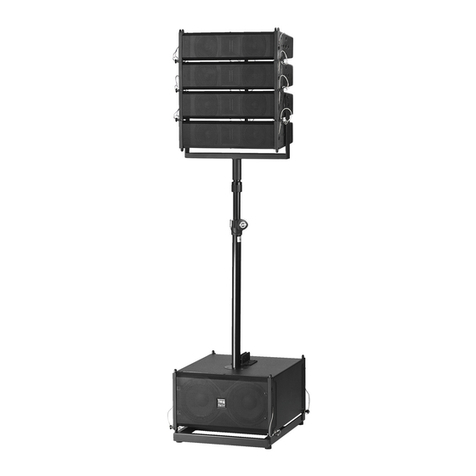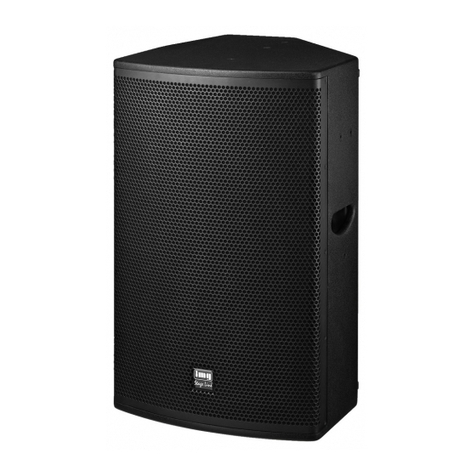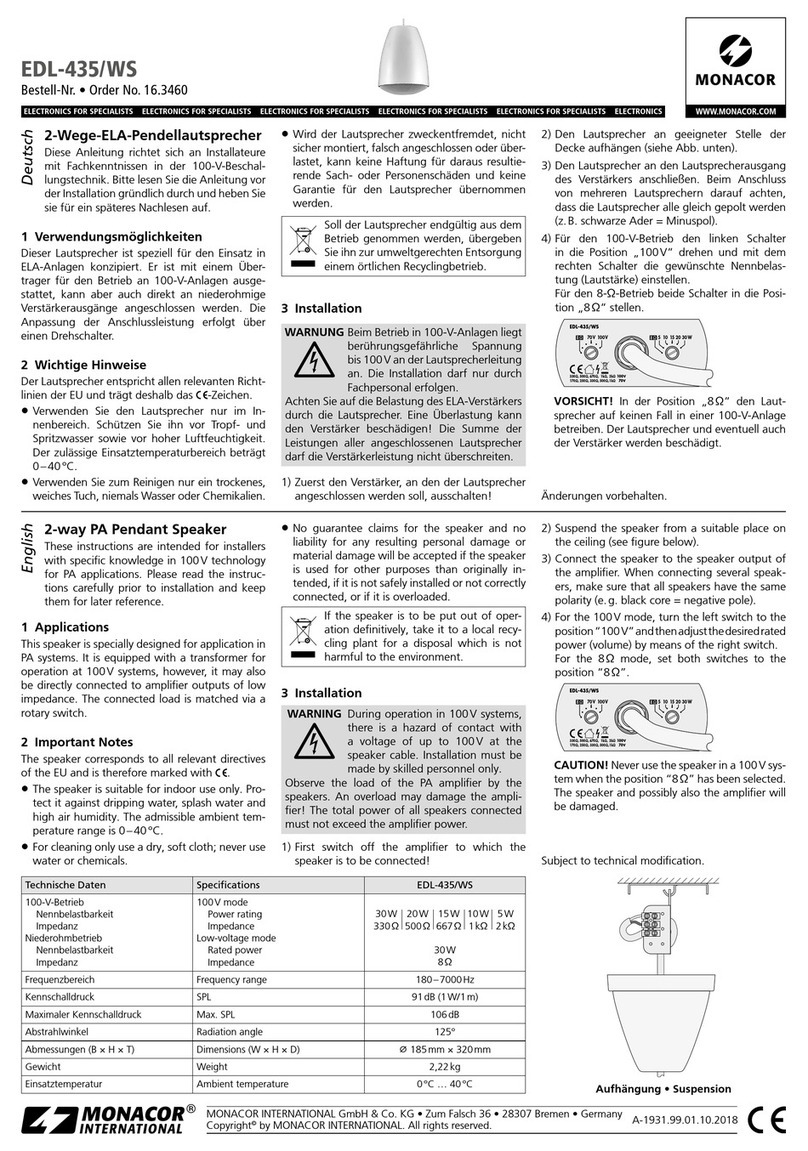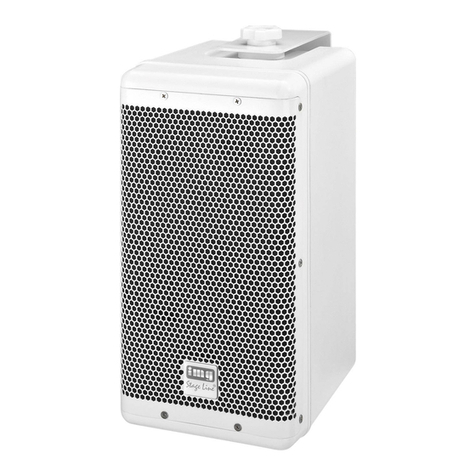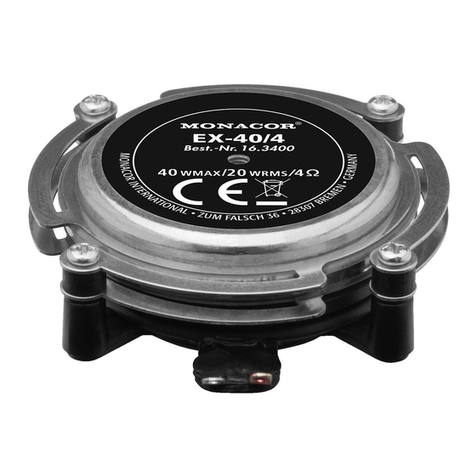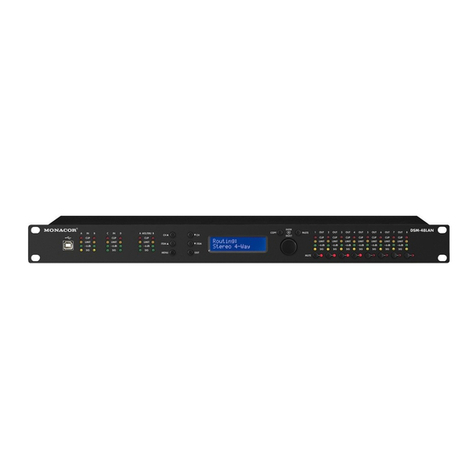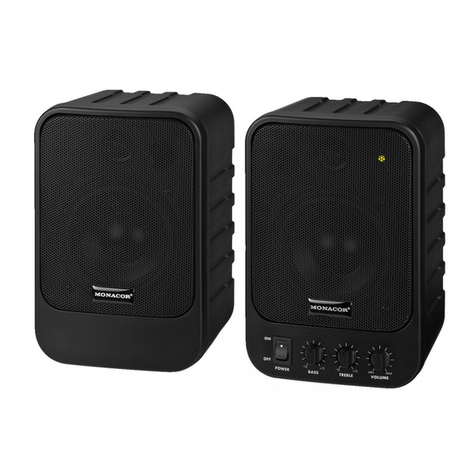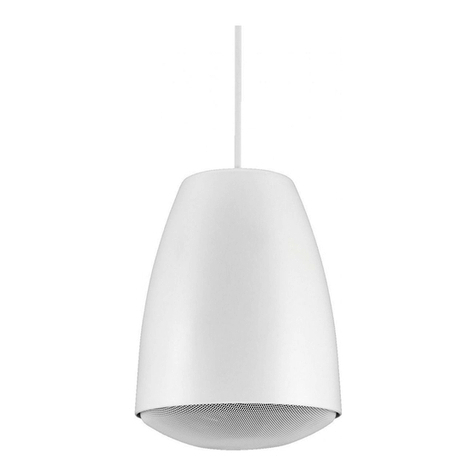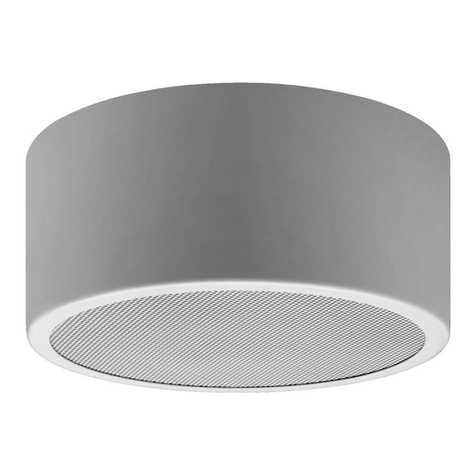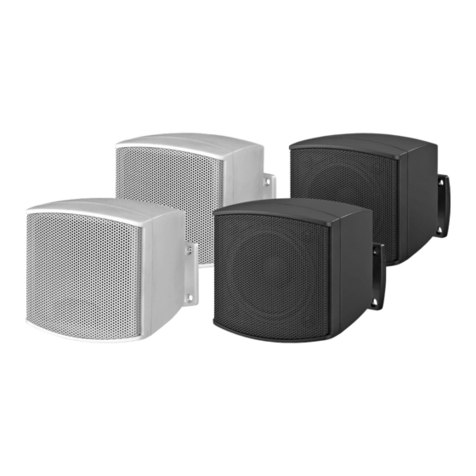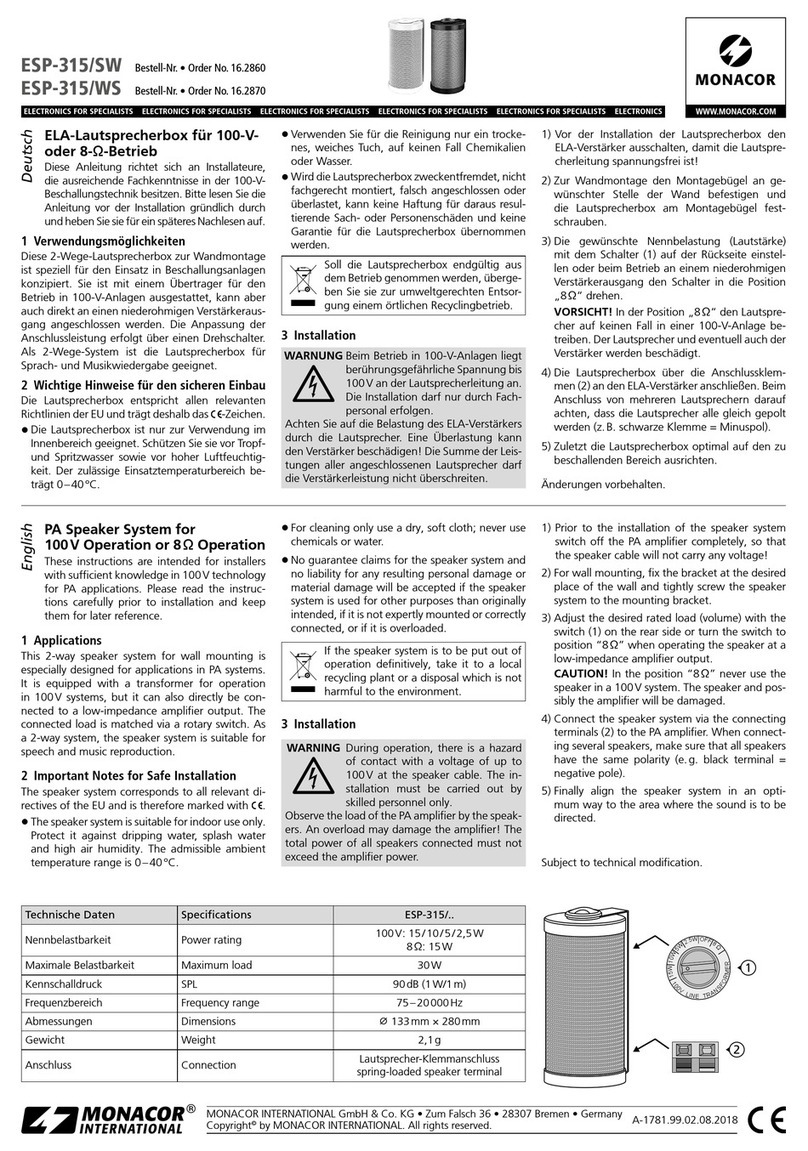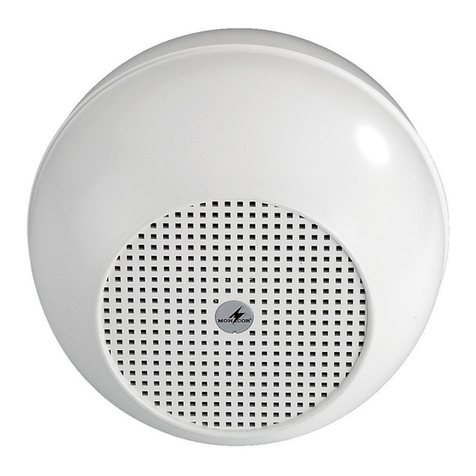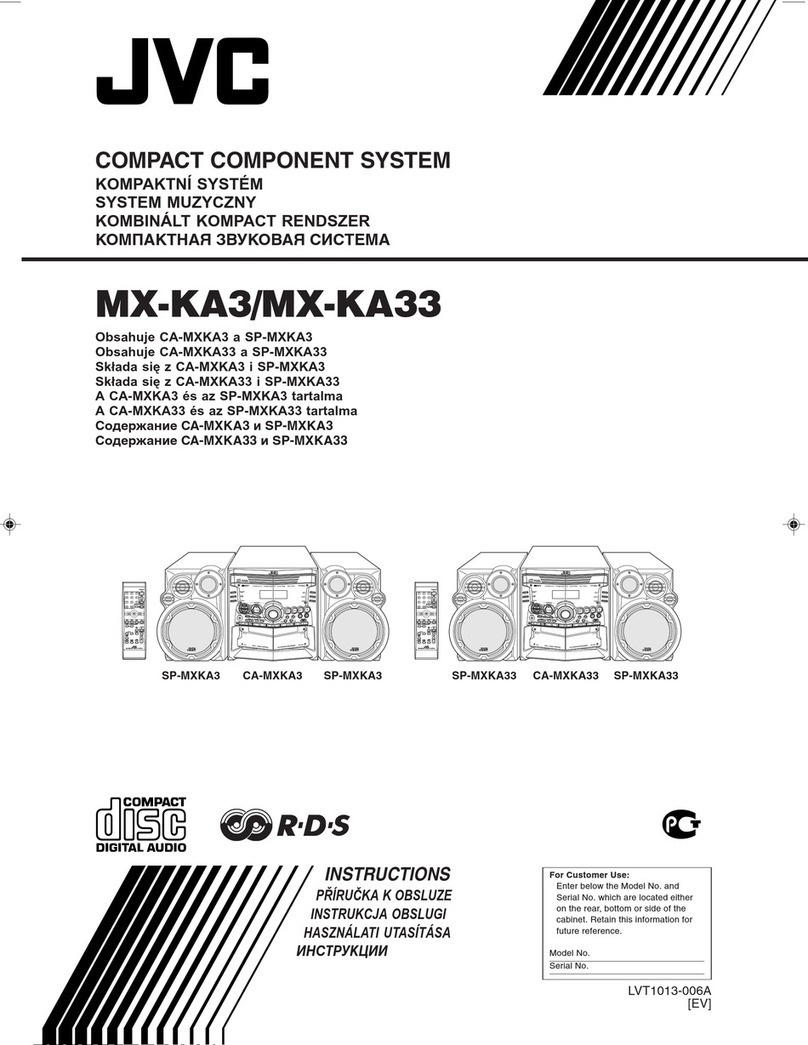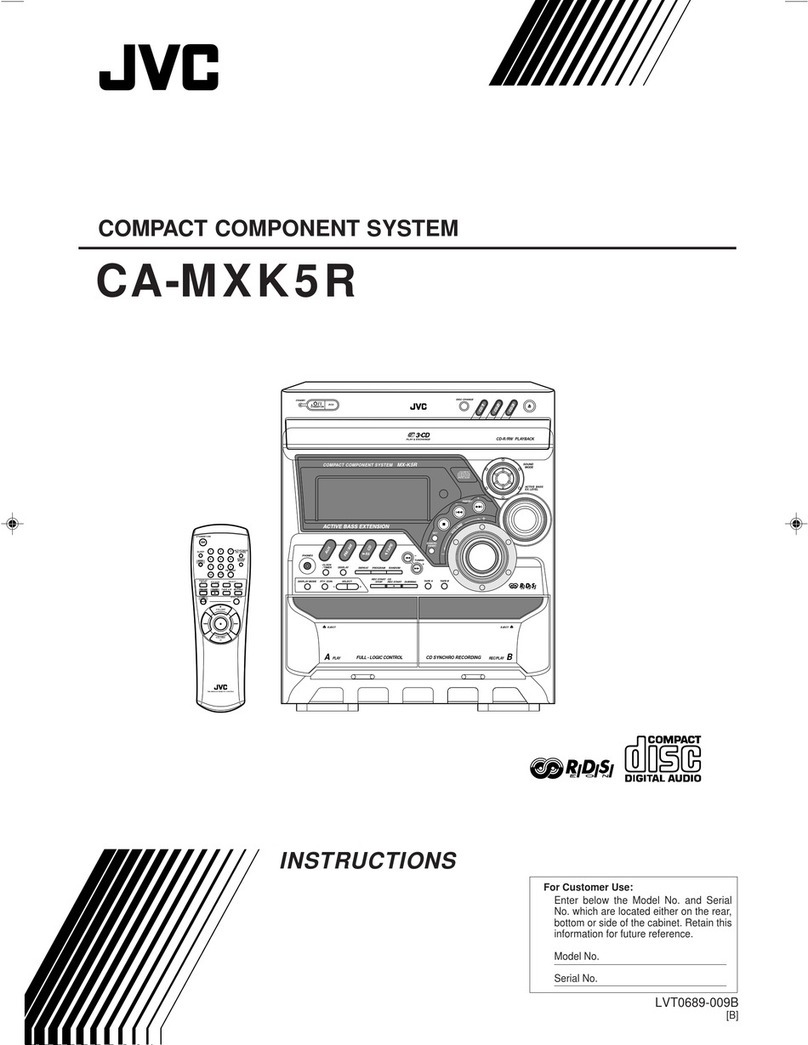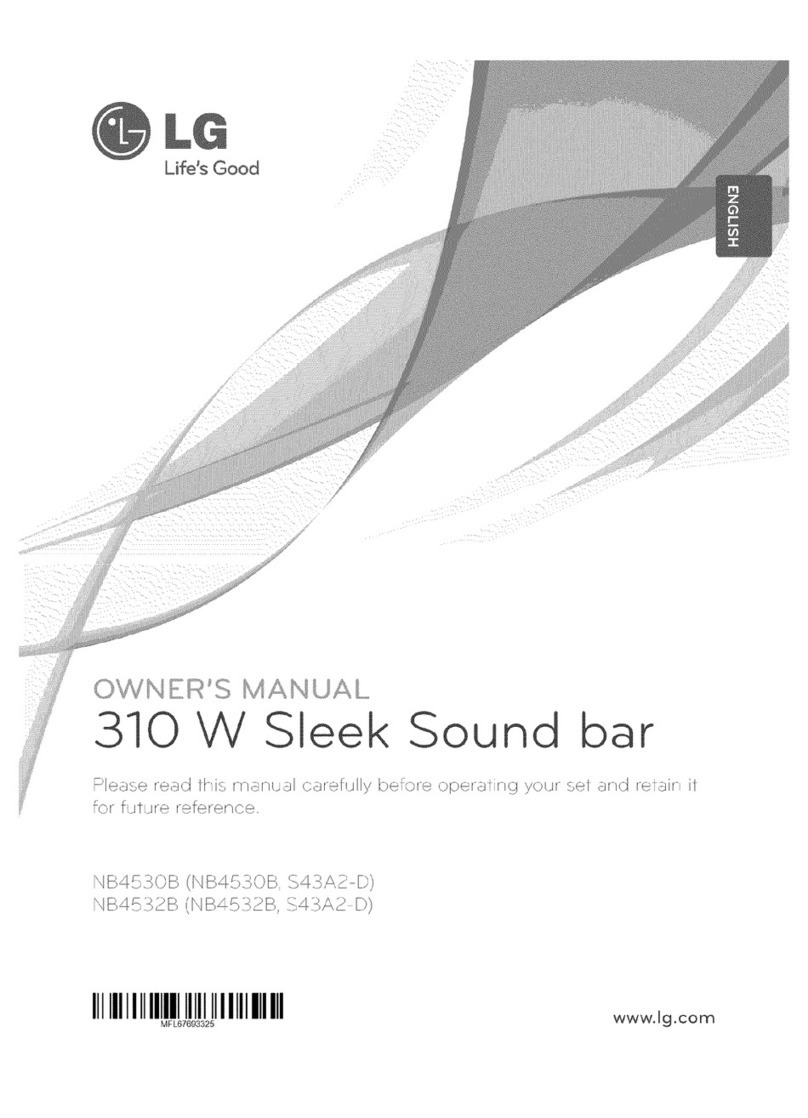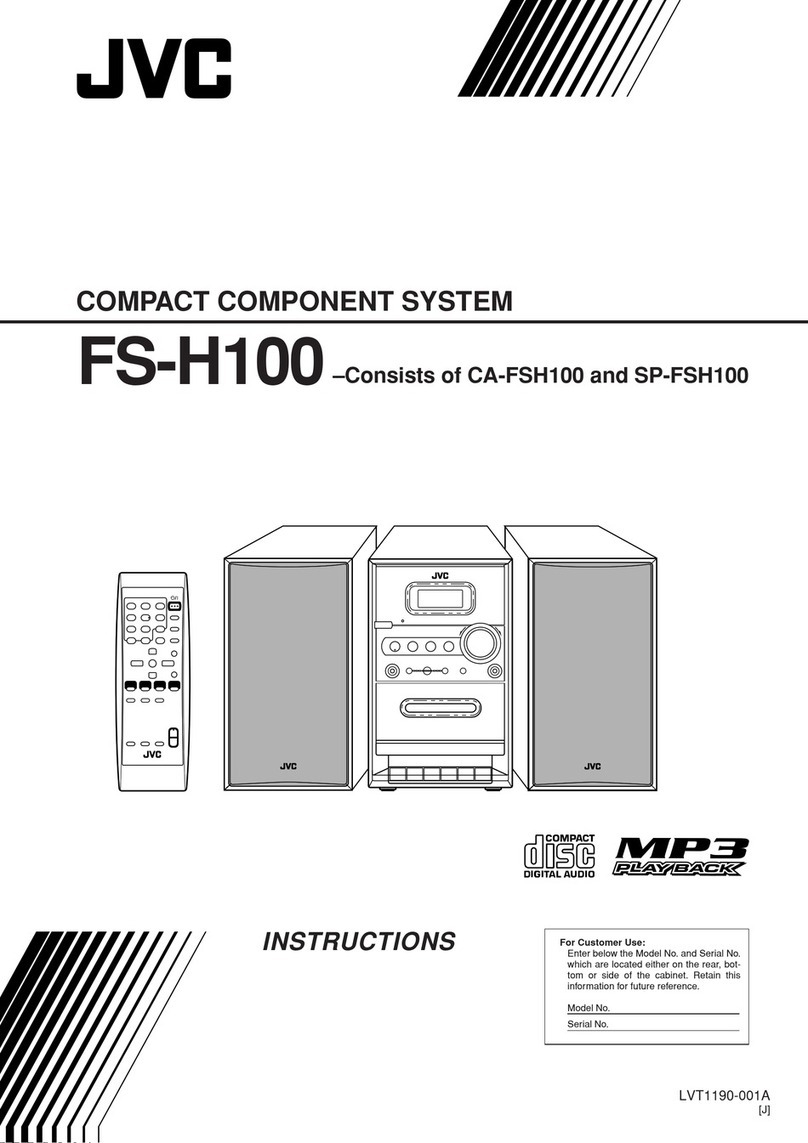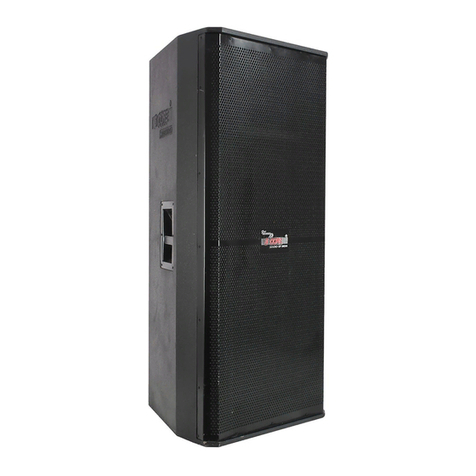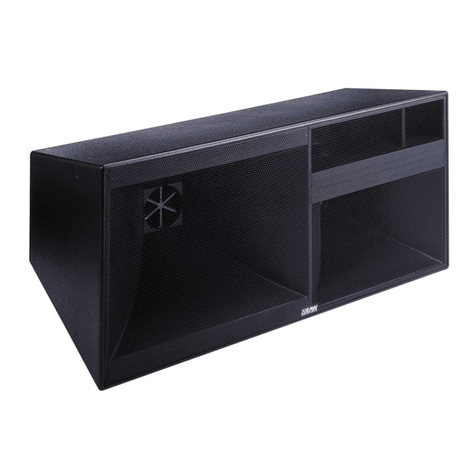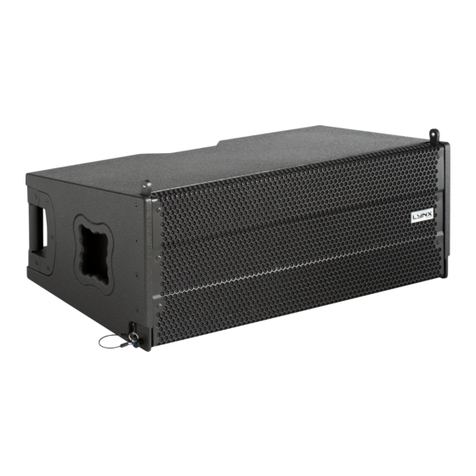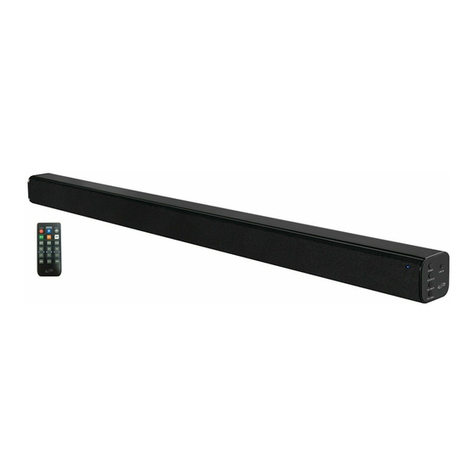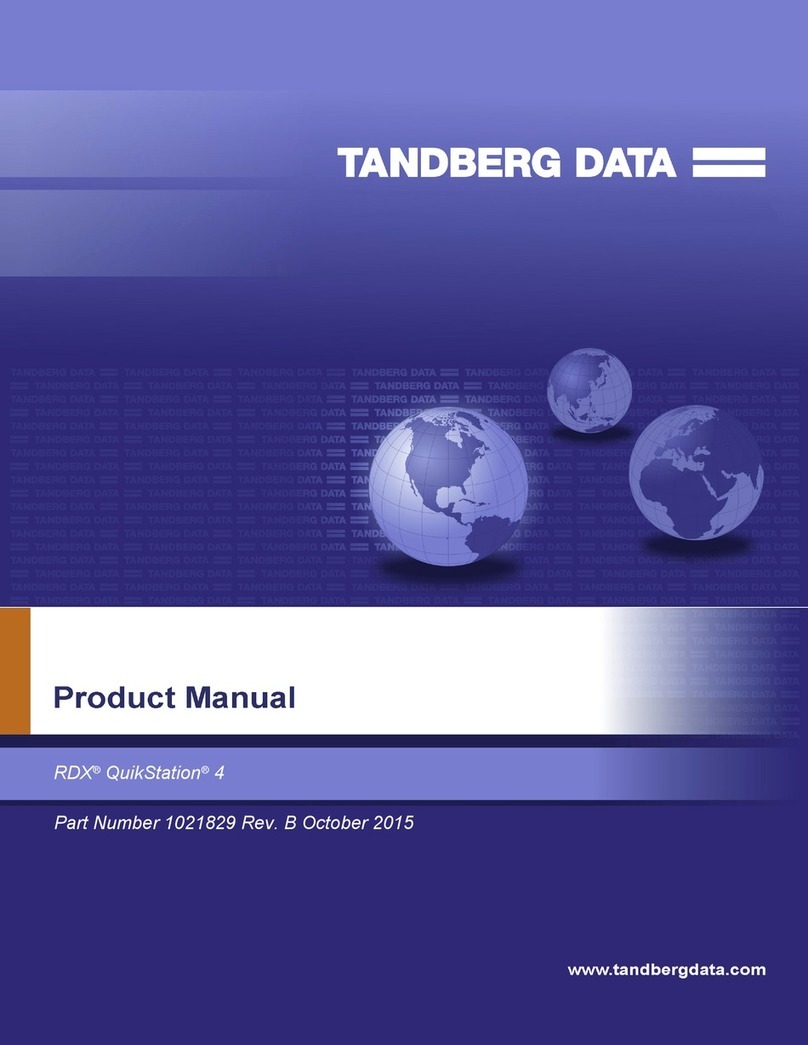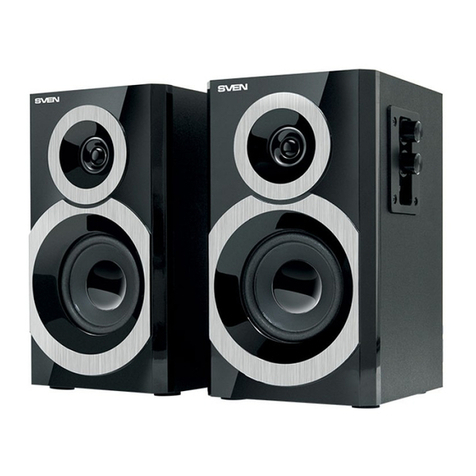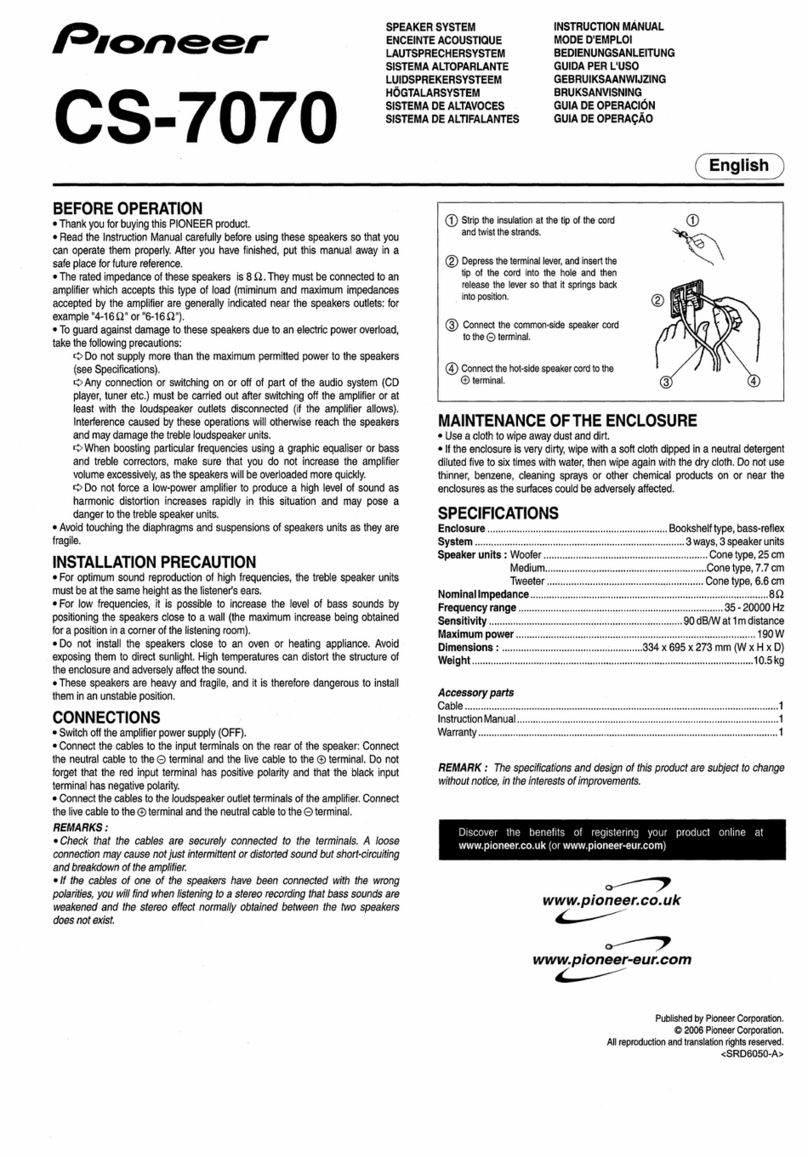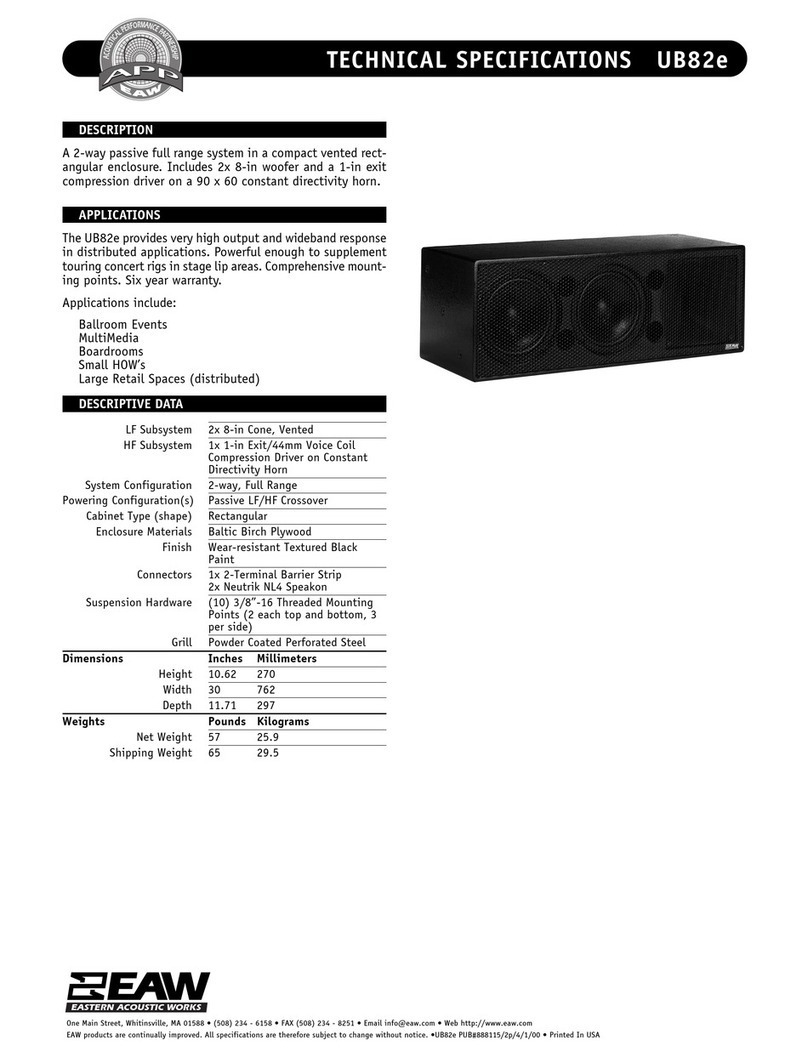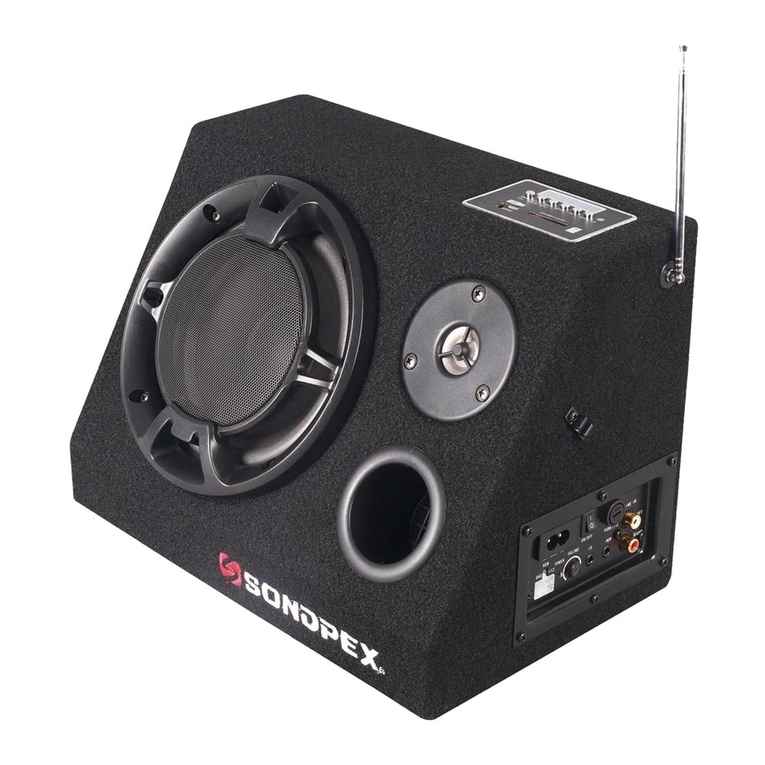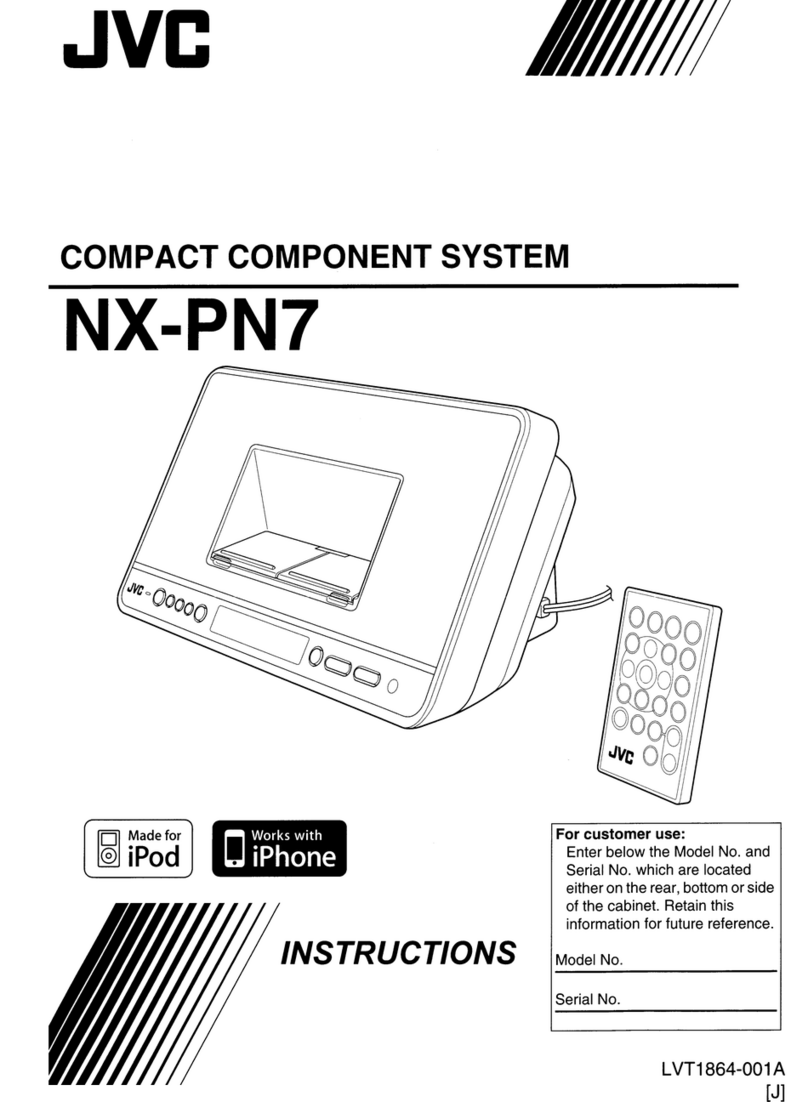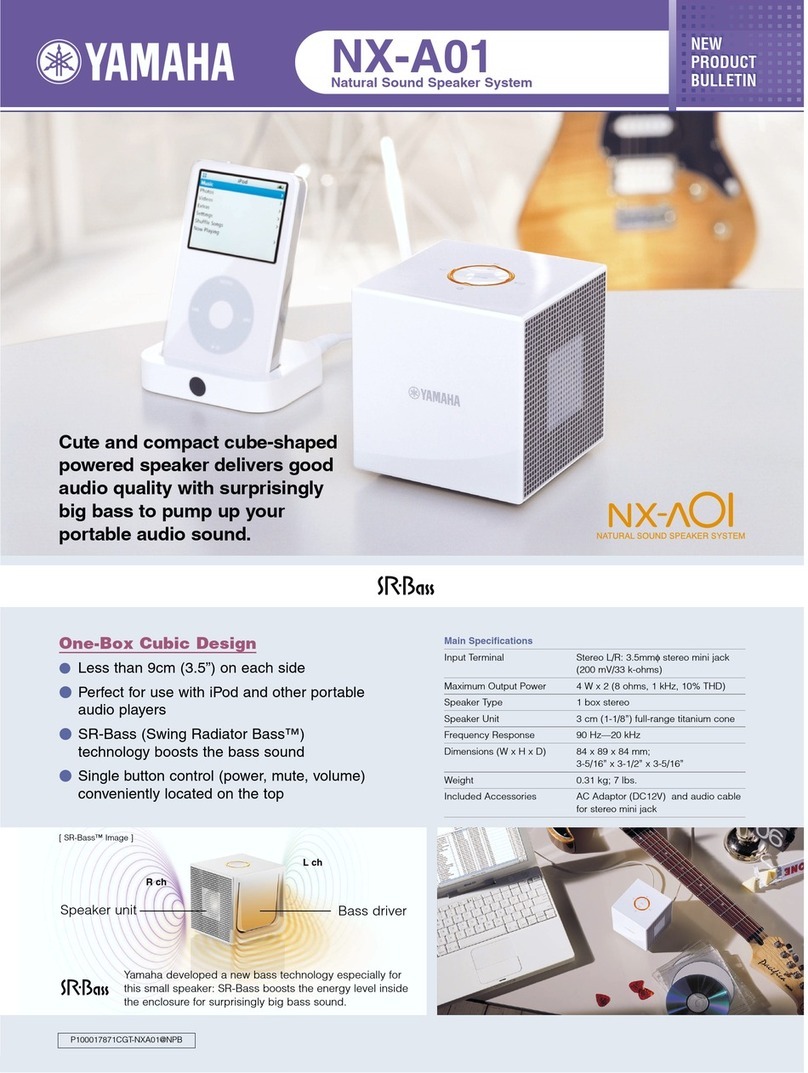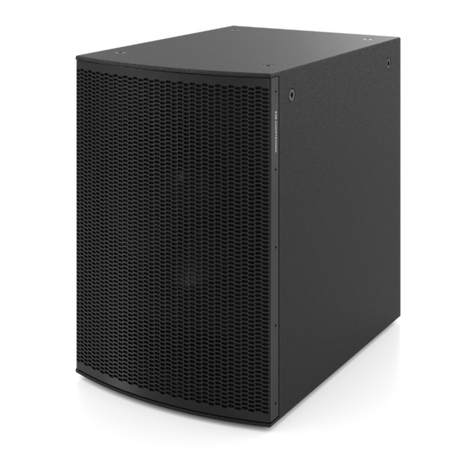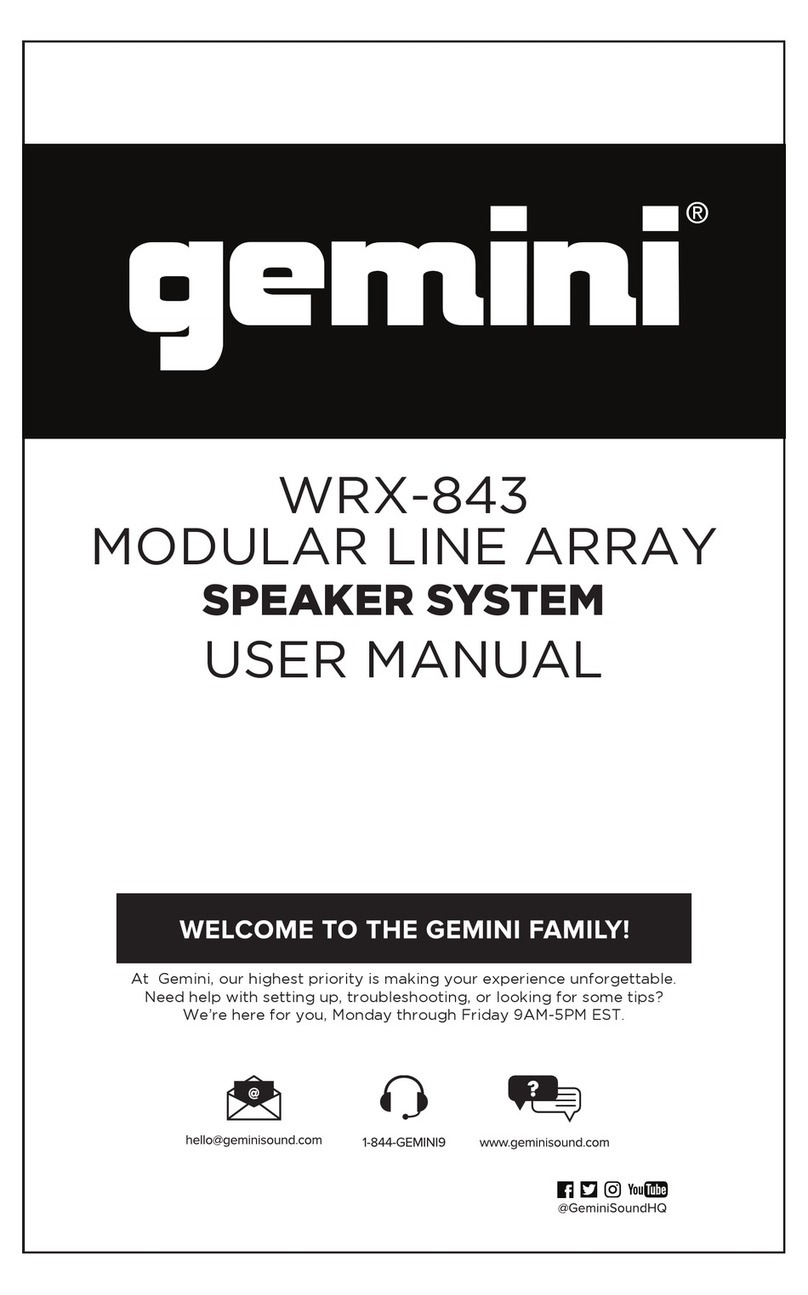2-Wege-Frequenzweiche
1Verwendungsmöglichkeiten
Diese Frequenzweiche ist speziell für den Einbau in Mehr-
wege-Lautsprecherboxen mit einer Belastbarkeit von bis zu
400W konzipiert. Sie ist als 2-Wege-Weiche aufgebaut und
lässt sich mit einer weiteren Frequenzweiche auf ein
3-Wege-System erweitern (Abb. 2).
2Wichtige Hinweise für den sicheren Gebrauch
Die Frequenzweiche entspricht der Richtlinie für elektroma-
gnetische Verträglichkeit 89/336/EWG.
●Verwenden Sie die Frequenzweiche nur im Innenbereich.
Schützen Sie sie vor Tropf- und Spritzwasser, hoher Luft-
feuchtigkeit und Hitze (zulässiger Einsatztemperaturbe-
reich 0–40°C).
●Wird die Frequenzweiche zweckentfremdet, falsch ange-
schlossen, überlastet oder nicht fachgerecht repariert,
kann keine Haftung für daraus resultierende Sach- oder
Personenschäden und keine Garantie für die Frequenz-
weiche übernommen werden.
3Anschluss
1) Den Basslautsprecher an die Stifte „B+“ und „B
-
“ an-
schließen.
2) Den Mittelhochtöner an die Stifte „OUT 1+“ und „
-
“ an-
schließen.
3) Als Eingang der Frequenzweiche dienen die Stifte „IN+“
und „
-
“. Soll das Eingangssignal auf einen weiteren Laut-
sprecher gegeben werden, lässt es sich von den Stiften
„OUT2+“ und „
-
“ weiterleiten.
4) Die Bassabtrennung erfolgt mit einer Flankensteilheit von
6dB/Oktave. Soll sie mit 12dB/Oktave erfolgen, kann in
dieWeiche zusätzlichein entsprechender Kondensator(in
Abb. 1 und 2 mit „Cx“ gekennzeichnet) eingelötet werden.
5) Wird zur optimalen Anpassung des Basslautsprechers ein
Korrekturglied benötigt, kann es in die Weiche eingelötet
werden(inAbb.1 und2 mit„Ry“ und „Cy“gekennzeichnet).
Soll die Weiche endgültig aus dem Betrieb genom-
menwerden, übergeben Sie sie zur umweltgerech-
ten Entsorgung einem örtlichen Recyclingbetrieb.
4Erweiterung zu einem 3-Wege-System
Die DNL-660 lässt sich mithilfe der Weiche DN-2618 von
MONACOR auf ein 3-Wege-System erweitern. Die Zusam-
menschaltung und derAnschluss der Lautsprecher ist in der
Abb. 2 dargestellt.
Die optimale Polung der Mitteltöner und des Hochtöners
ist von den verwendeten Lautsprechern und von ihrerAnord-
nung in der Lausprecherbox abhängig. Bei Bedarf muss sie
durch wechselweises Verpolen ermittelt werden. Meistens ist
der Anschluss, wie in der Abb. 2 dargestellt, am besten.
5Technische Daten
Eingangsbelastbarkeit: . . . . . max. 400W
Anschlussimpedanz: . . . . . . . 8Ω
Trennfrequenz: . . . . . . . . . . . . 310Hz
Flankensteilheit: . . . . . . . . . . . 6dB/Oktave
Abmessungen, Gewicht: . . . . 145 x 33 x 120mm, 700g
Änderungen vorbehalten.
2-way Crossover Network
1Applications
This crossover network is specially designed for installation
into multiple-way speaker systems of a power capability of
up to 400W. It is set up as a 2-way crossover network, and
by means of another crossover network it can be extended
to a 3-way system (fig. 2).
2Safety Notes
This crossover network corresponds to the directive for
electromagnetic compatibility 89/336/EEC.
●The crossover network is suitable for indoor use only. Pro-
tect it against dripping water and splash water, high air
humidity, and heat (admissible ambient temperature
range 0–40°C).
●No guarantee claims for the crossover network and no
liability for any resulting personal damage or material
damagewill beaccepted ifthe crossovernetwork isused for
other purposes than originally intended, if it is not correctly
connected, overloaded, or not repaired in an expert way.
3Connection
1) Connect the bass speaker to the pins “B+” and “B
-
”.
2) Connect the midrange speaker to the pins “OUT1+”
and “
-
”.
3) The pins “IN+” and “
-
” serve as an input of the crossover
network. For feeding the input signal to another speaker,
it can be passed on by the pins “OUT 2+” and “
-
”.
4) The bass separation is made with a slope of 6dB/octave.
For a slope of 12dB/octave, a corresponding capacitor
(marked “Cx” in figs. 1 and 2) can additionally be soldered
into the crossover network.
5) If a compensating element is required for optimum match-
ing of the bass speaker, it is possible to solder it into the
crossovernetwork (marked “Ry” and “Cy” in figs. 1and 2).
If the crossover network is to be put out of opera-
tion definitively, take it to a local recycling plant for
adisposal which isnot harmful to theenvironment.
4Extension to a 3-way System
By means of the MONACOR crossover network DN-2618,
DNL-660 can be extended to a 3-way system. The inter-
connection and the connection of the speakers can be found
in fig. 2.
The optimum polarity of the midrange speakers and the
tweeter depends on the speakers used and on their arrange-
ment within the speaker cabinet. If required, it must be de-
termined by reversing the polarity of the speakers. Usually,
the best connection is the one shown in fig. 2.
5Specifications
Input power capability: . . . . . . 400W max.
Load impedance: . . . . . . . . . . 8Ω
Crossover frequency: . . . . . . . 310Hz
Slope: . . . . . . . . . . . . . . . . . . . 6dB/octave
Dimensions, weight: . . . . . . . . 145 x 33 x 120mm, 700g
Subject to technical modification.
Filtre de fréquences 2 voies
1Possibilités d’utilisation
Ce filtre de fréquences est spécialement conçu pour une ins-
tallation dans des enceintes multivoies avec une charge ad-
missible de 400W max. Il est construit comme un filtre
2voies et peut être étendu à un système 3 voies avec un au-
tre filtre (voir schéma 2).
2Conseils d’utilisation et de sécurité
Le filtre répond à la norme européenne 89/336/CEE relative
à la compatibilité électromagnétique.
●Le filtre n’est conçu que pour une utilisation en inté-
rieur. Protégez-le de tout type de projections d’eau, des
éclaboussures, d’une humidité élevée et la chaleur (plage
de température de fonctionnement autorisée : 0–40°C).
●Nous déclinons toute responsabilité en cas de dommages
matériels ou corporels résultants si le filtre est utilisé dans
un but autre que celui pour lequel il a été conçu, s’il n’est
pas correctement branché, s’il y a surcharge ou s’il n’est
pas réparé par une personne habilitée, en outre, la ga-
rantie deviendrait caduque.
3Connexion
1) Reliez le haut-parleur de grave aux pins “B+” et “B
-
”.
2) Reliez le haut-parleur de médium aigu aux pins “OUT 1+”
et “
-
”.
3) Les pins “IN+” et “
-
” servent d’entrée du filtre. Si le signal
d’entrée doit être appliqué à un autre haut-parleur, il peut
être dirigé par les pins “OUT 2+” et “
-
”.
4) La séparation des graves s’effectue avec une pente de
6dB/octave. Si elle doit s’effectuer avec 12 dB/octave,
un condensateur adéquat peut, en plus, être soudé dans
le filtre (sur les schémas 1 et 2, repéré par “Cx”).
5) Si pour une adaptation optimale du haut-parleur de
grave, un élément correcteur est nécessaire, il peut être
Lorsque le filtre est définitivement retiré du ser-
vice, vous devez le déposer dans une usine de
recyclage adaptée pour contribuer à son élimina-
tion non polluante.
soudé dans le filtre (schémas 1 et 2, repérés par “Ry” -
et “Cy”).
4Extension à un système 3 voies
Le DNL-660 peut être étendu à un système 3 voies avec le
filtre DN-2618 de MONACOR. Le schéma 2 présente l’inter-
connexion et le branchement des haut-parleurs.
La polarité optimale des haut-parleurs de médium aigu et
du haut-parleur d’aigu dépend des haut-parleurs utilisés et
de leur arrangement dans l’enceinte. Si besoin, elle peut
être déterminée en inversant la polarité des haut-parleurs.
Généralement, le branchement tel que présenté sur le
schéma 2 est le meilleur.
5Caractéristiques techniques
Charge d’entrée : . . . . . . . . . . 400W max.
Impédance de branchement : 8Ω
Fréquence de coupure : . . . . . 310Hz
Pente : . . . . . . . . . . . . . . . . . . 6dB/octave
Dimensions, poids : . . . . . . . . 145 x 33 x 120mm, 700g
Tout droit de modification réservé.
